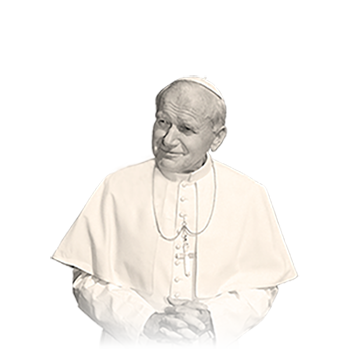–
5 October 2024
STS. PLACIDUS AND MAURUS, DISCIPLES OF ST. BENEDICT
ST. FAUSTINA KOWALSKA

Saint Faustina Kowalska, the great apostle of Divine Mercy, was born August 25, 1905, in Poland, in the small village of Glogowiec. Her parents, Marianna and Stanislao Kowalski, humble peasants and fervent Christians, convey a deep and authentic faith. Baptized by the name of Helena, the saint already at the age of seven perceived the call to religious life, but, without the consent of the parents, could not pursue it. The third of ten children, Helena left school after three years and began working as a domestic in some wealthy households, to help maintain her own family. Aged 20, driven by a vision of suffering Christ who says to her, “How long will I have to bear you? As long as you trick me?” she decides to enter religious life.
On 10 August, 1925, she entered the Convent of the Sisters of the Blessed Virgin Mary of Mercy in Warsaw, and took the name of Sister Maria Faustina. She spent thirteen years of religious life in various convents of the congregation, working as a cook, gardener and porter. She went about her work with dedication and humility, in an attitude of discretion and willing readiness. Abundant were the graces that the Lord gave her, of which His stigmata were the most visible sign. There were also numerous revelations and visions that, as suggested by her confessors, she recorded in her Diary, which is now translated into many languages. She died only 33 years old, October 5, 1938, in Krakow, consumed by tuberculosis.
The “secretary” of Divine Mercy
On February 22, 1931, St. Faustina noted in her Diary: “In my cell, I saw the Lord Jesus dressed in white: a hand raised to bless, while the other touched on his chest the slightly opened border of his robe, letting escape two great rays out: one red the other pale... After a while, Jesus said to me, ‘Paint an image according to the model you see, with these words written: Jesus, I trust in You. I wish this image to be venerated first in your chapel, and then in the whole world. I promise that the soul that will venerate this image will not perish ... because I myself will defend it as my own glory. (D.47-48)’”
The image was painted, and came to enjoy great diffusion, along with other new forms of devotion to the Divine Mercy that Jesus himself asks Sister Faustina to spread: the feast of Divine Mercy on the first Sunday after Easter, the Divine Mercy Chaplet, and Prayer at the Hour of Mercy (3 pm).
To the humble Polish nun, whom Jesus liked to call secretary of my deepest mystery, Our Lord entrusted His message of love to every man. “In the Old Testament I sent the prophets with lightning to my people,” she records Him as having told her, “today I send you to the whole world, to all humanity with my mercy. I do not want to punish suffering humanity, but I want to heal and bind them fast to my merciful heart. (D.252)”
The devotion of Archbishop Wojtyla
Devotion to Merciful Jesus knew a rapid spread in Poland just after the death of Sister Faustina. In the 1960s, the then-Archbishop of Krakow, Karol Wojtyla, promoted the the spread of knowledge about her life and virtues. As Pope John Paul II, he proclaimed her blessed on April 18, 1993 and Saint on April 30, 2000, announcing on the same date the establishment of the Sunday of Divine Mercy. It was just on the eve of this feast, on April 2, 2005, that the Polish Pope reached the House of the Father. St. Faustina was among the patrons of the Jubilee of Mercy proclaimed by Pope Francis.

